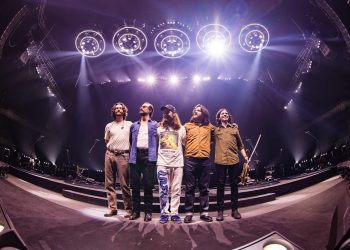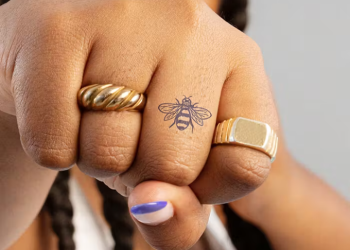Introduction to Virtual Worlds and Digital Art
Virtual worlds have become integral components of modern entertainment, offering immersive experiences through gaming and virtual reality (VR) technologies. At the heart of these virtual environments lies digital art, a critical element that shapes the visual aesthetics and interactive experiences of users.
The Evolution of Digital Art in Gaming
The evolution of digital art in gaming parallels the advancements in technology and graphics capabilities. From simple pixelated sprites to lifelike 3D models and environments, digital art has undergone a remarkable transformation, enhancing the realism and immersion of gaming experiences.
The Rise of Virtual Reality (VR)
Virtual reality has emerged as a revolutionary technology that transports users to fully immersive digital environments. By simulating realistic sensory experiences, VR has opened up new possibilities for interactive storytelling and experiential gaming, further amplifying the importance of digital art in shaping virtual worlds.
Integration of Digital Art in VR Environments
In VR environments, digital art plays a central role in creating immersive and believable worlds. From meticulously crafted landscapes to intricately designed characters and objects, every element of the virtual environment is a testament to the creative vision and technical expertise of digital artists.
Creating Virtual Worlds: Artistic Processes
The creation of virtual worlds involves a complex and collaborative artistic process. Digital artists employ a variety of tools and techniques, including 3D modeling, texturing, lighting, and animation, to bring virtual environments to life, drawing inspiration from diverse sources such as art, literature, and real-world landscapes.
Role of Digital Artists in Game Development
Digital artists are indispensable members of game development teams, contributing their expertise to every stage of the production process. Whether designing characters, environments, or visual effects, digital artists play a pivotal role in shaping the visual identity and gameplay experience of video games.
Visual Storytelling in Virtual Worlds
Digital art serves as a powerful tool for visual storytelling in virtual worlds, enabling developers to convey narratives and evoke emotions through immersive environments and interactive elements. From epic landscapes to intimate character interactions, digital art enhances the narrative depth and emotional resonance of gaming experiences.
Challenges and Opportunities for Digital Artists
While digital art in gaming and VR offers exciting opportunities for creativity and innovation, it also presents unique challenges. Technical constraints, tight deadlines, and evolving industry trends require digital artists to adapt and continuously hone their skills to stay competitive in the rapidly evolving landscape of virtual worlds.
Pushing the Boundaries of Creativity
Digital artists are constantly pushing the boundaries of creativity, experimenting with new techniques and designs to create visually stunning and memorable experiences. From abstract art installations to surreal landscapes, digital art in gaming and VR defies conventions and challenges perceptions of what is possible in virtual environments.
User Interaction and Engagement
User interaction and engagement are key considerations in the design of virtual worlds. Digital artists strive to create immersive and intuitive experiences that captivate users and encourage exploration, fostering a sense of agency and immersion that enhances the overall gaming experience.
Impact on Gaming Culture and Industry
The impact of digital art on gaming culture and the gaming industry cannot be overstated. From iconic characters and environments to groundbreaking visual effects, digital art has shaped the collective imagination of gamers worldwide and propelled the industry to new heights of creativity and innovation.
Future Trends and Implications
Looking ahead, the future of digital art in gaming and VR is brimming with possibilities. Advancements in technology, such as real-time ray tracing and artificial intelligence, promise to further elevate the fidelity and realism of virtual worlds, while new platforms and distribution models offer fresh avenues for artistic expression and monetization.
Collaborations between Artists and Developers
Collaboration between digital artists and game developers is essential for the success of virtual worlds. By fostering open communication and collaboration, artists and developers can leverage their respective skills and expertise to create cohesive and compelling gaming experiences that resonate with audiences.
Ethical Considerations in Virtual Worlds
As virtual worlds become increasingly lifelike and immersive, ethical considerations such as representation, diversity, and accessibility become more pronounced. Digital artists and developers must strive to create inclusive and respectful virtual environments that reflect the diversity of the real world and prioritize the well-being of users.
Conclusion
In conclusion, digital art plays a central role in shaping virtual worlds in gaming and VR, offering limitless opportunities for creativity, immersion, and storytelling. As technology continues to advance and evolve, digital artists will continue to push the boundaries of what is possible, creating unforgettable experiences that captivate and inspire audiences worldwide.

FAQs After The Conclusion:
- What software do digital artists use to create virtual worlds in gaming and VR?Digital artists use a variety of software tools and programs, including 3D modeling software like Blender and Autodesk Maya, digital painting software like Adobe Photoshop and Corel Painter, and game engines like Unity and Unreal Engine.
- How can I become a digital artist for gaming and VR?To become a digital artist for gaming and VR, you can start by learning the fundamentals of digital art, including 3D modeling, texturing, and animation. Taking courses, practicing regularly, and building a strong portfolio are essential steps towards pursuing a career in this field.
- What skills are required to excel as a digital artist in gaming and VR?Key skills for digital artists in gaming and VR include proficiency in 3D modeling, texturing, lighting, animation, and digital sculpting, as well as strong artistic and creative abilities, attention to detail, and the ability to collaborate effectively with others.
- What are some examples of digital art in popular video games and VR experiences?Examples of digital art in popular video games and VR experiences include the lifelike environments of Red Dead Redemption 2, the character designs of Overwatch, the atmospheric landscapes of Skyrim, and the immersive worlds of VR games like Beat Saber and Half-Life: Alyx.
- How can I stay updated on the latest trends and technologies in digital art for gaming and VR?Staying updated on the latest trends and technologies in digital art for gaming and VR involves regularly consuming industry news, following influential artists and developers on social media, participating in online communities and forums, and attending industry events and conferences.
- What are some common career paths for digital artists in the gaming and VR industries?Common career paths for digital artists in the gaming and VR industries include character artist, environment artist, concept artist, texture artist, animator, and art director, among others. Digital artists may work for game development studios, animation studios, VR companies, or as freelance artists.
- Are there any ethical considerations to keep in mind when creating virtual worlds for gaming and VR?Yes, ethical considerations such as representation, diversity, and accessibility are important considerations when creating virtual worlds for gaming and VR. Digital artists and developers should strive to create inclusive and respectful virtual environments that reflect the diversity of the real world and prioritize the well-being of users.
- What are some resources for aspiring digital artists interested in gaming and VR?Resources for aspiring digital artists interested in gaming and VR include online courses, tutorials, books, and workshops focused on digital art fundamentals, as well as industry-specific resources such as game development forums, VR communities, and portfolio-building platforms.















